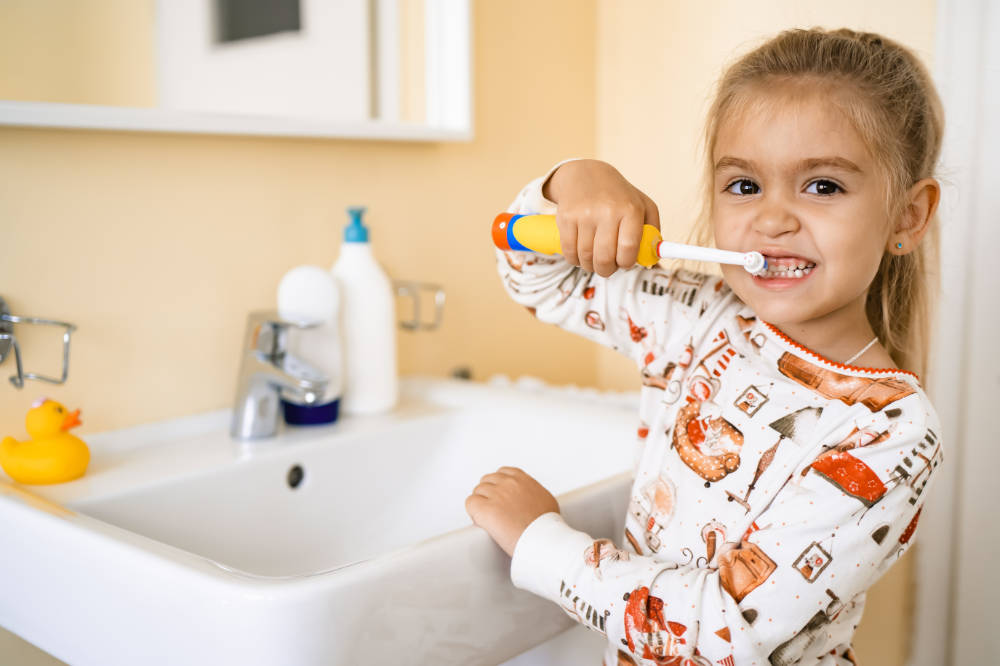Parents want to know if investing in an electric toothbrush truly leads to a cleaner smile or if a classic bristled brush will do the trick. While a regular toothbrush is often more cost-efficient, there are some specific advantages that may make electric the way to go.
Better Plaque Removal
Thanks to their oscillating or vibrating bristles, electric toothbrushes help remove plaque more thoroughly, especially in hard-to-reach areas. They’re particularly effective at cleaning around the gumline, where buildup often hides. By removing plaque more efficiently, electric toothbrushes can help prevent cavities, gingivitis, and other oral health concerns.
The Fun Factor
Electric brushes often come with built-in timers, lights, or music making brushing feel exciting. These interactive features help keep kids engaged and make it easier for them to brush for the full two minutes.
Letting kids pick out their own toothbrush, whether it lights up, plays music, or has their favorite character, can make a big difference. When they feel like it’s their special toothbrush, they’re more excited to use it. That little bit of ownership can turn brushing from a daily battle into something they actually look forward to. And the more fun it is, the more likely it becomes part of a healthy routine that sticks.
When a Manual Toothbrush Still Works
While electric toothbrushes offer many perks, manual brushes are far from obsolete. A soft-bristled manual toothbrush can still be very effective, especially when paired with proper brushing technique and a little supervision from parents.
For children under the age of 3, a manual toothbrush is the best choice. It’s important to use a kid-sized brush with soft bristles that’s gentle on tiny teeth and sensitive gums. Electric toothbrushes are typically not recommended at this age, as they may be too bulky or overstimulating for toddlers.
Manual toothbrushes may also be ideal for:
- Kids who are sensitive to vibration or noise
- Very young children who are just learning to brush
- Situations where portability and simplicity are a priority (like travel or school)
Once your child is 3 or older, they can start to decide whether they prefer a regular or electric toothbrush. At this point, it’s all about what makes brushing easier and more enjoyable for them. Some kids love the buzz and lights of an electric brush, while others are perfectly happy with a traditional one. The goal is to find a brush that fits their mouth and encourages them to brush consistently and correctly.
Not Sure Which Toothbrush is Right for Your Child?
Choosing the right toothbrush can feel overwhelming with so many options out there. A good rule of thumb is to always look for brushes that are accepted by the American Dental Association (ADA)—they’ll have the ADA Seal of Acceptance right on the packaging. This seal means the toothbrush has been tested for safety and effectiveness. For a full list of ADA-accepted toothbrushes, you can visit the ADA’s official toothbrush guide.
So, What’s the Best Choice?
The best toothbrush is the one your child will use correctly. If an electric brush helps your child stay motivated, brush longer, and clean more thoroughly, it’s likely worth the investment!
If you’d like personalized recommendations for your child, including the best toothbrush options for their age and stage, schedule a visit with Little Smiles today. Let’s work together to keep those little smiles healthy and bright!

